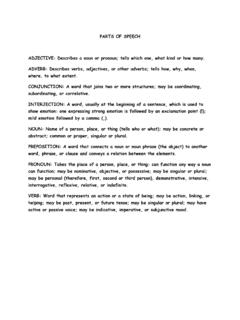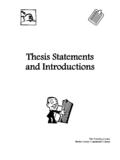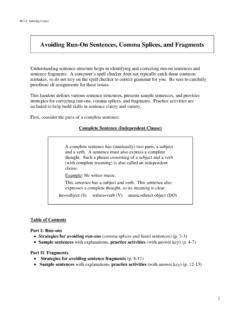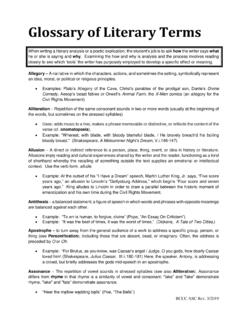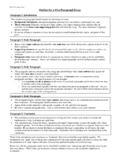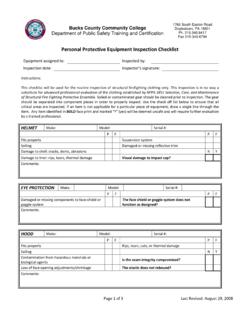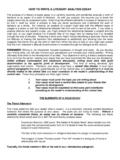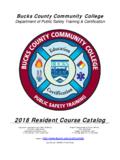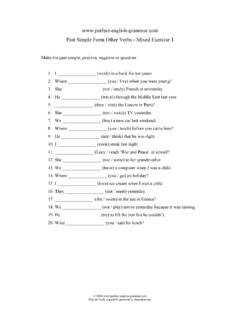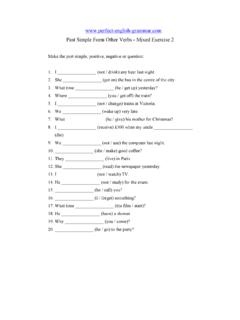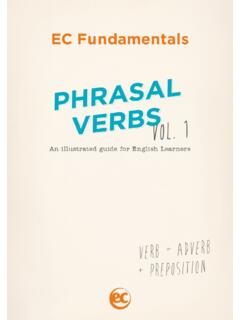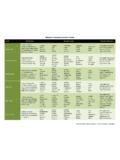Transcription of Reflexive Verbs Verbos Reflexivos - Think Smart
1 Spanish BCCC Tutoring Center Rev. 7/2015 Reflexive Verbs Verbos Reflexivos In Spanish, there is a unique class of Verbs that uses Reflexive pronouns called Reflexive Verbs . Reflexive Verbs are easily recognizable due to the addition of se at the end of the infinitive. The se at the end of the infinitive represents the Reflexive pronoun. With Reflexive Verbs , the action reflects back on the subject. The subject receives the action of the verb , and therefore, the subject and the object of the sentence are the same. o The Reflexive pronoun demonstrates that the verb is a self-action, something that can be thought of as doing to oneself. Reflexive Pronouns me myself te yourself se himself/herself/yourself (formal)/ itself nos ourselves os yourselves se themselves (m. or f.)/yourselves Steps to conjugate Reflexive Verbs : 1. Determine the subject of the verb . Who is performing/receiving the action of the verb ?
2 2. Pick the Reflexive pronoun that corresponds to the subject. 3. Conjugate normally. (Drop the AR, -ER, or IR ending. Add appropriate ending.) NOTE: The Reflexive pronoun always goes before the conjugated verb ! Example: Miguel _____ (afeitarse) y _____ (ba arse) cada ma ana. 1. Who is the subject? Miguel is the subject. 2. Which Reflexive pronoun is necessary? If Miguel is the subject, then the 3rd person singular Reflexive pronoun se is necessary. 3. What is the appropriate ending for the conjugated verb ? Since Miguel is the subject, the 3rd person singular form of the conjugated verb must be used. For AR Verbs , the 3rd person singular ending is a. Answer: Miguel se afeita y se ba a cada ma ana. Common Reflexive Verbs despertarse (ie) to wake up (oneself) afeitarse to shave (oneself) cepillarse to brush (oneself) ducharse to shower (oneself) ba arse to bathe (oneself) atreverse to dare (oneself) quejarse to complain arrepentirse to repente acostarse (ue) to go to bed divertirse (ie) to enjoy (oneself) maquillarse to put on makeup peinarse to comb one s hair Spanish BCCC Tutoring Center Rev.
3 7/2015 Examples of Reflexive Verbs : Los estudiantes se despiertan a las seis y media de la ma ana. The students wake up at six thirty in the morning. Me maquillo antes de salir por la noche con mi novio. I put on makeup before going out at night with my boyfriend. El dentista dice que es necesario cepillarse los dientes tres veces al d a. The dentist says that it is necessary to brush your teeth three times a day. Many transitive Verbs can easily and logically be made Reflexive by adding the Reflexive pronoun. Examples of Verbs that can be Reflexive or Non- Reflexive lavar to wash poner to put llamar to call sentar (ie) to seat vestir (i) to dress quedar to remain lavarse to wash oneself ponerse to put on (oneself) llamarse to call oneself/ to be named sentarse (ie) to sit down vestirse (i) to get dressed quedarse to stay Examples: o Llamo a mi madre todos los d as.
4 Mi madre se llama Mar a. I call my mother every day. My mother s name is Maria. o Despu s de cocinar, mi madre lava los platos. Me lavo la cara en la ma ana. After cooking, my mother washes the dishes. I wash my face in the morning. Some Verbs have a slightly different meaning when Reflexive . Examples of Verbs with Different Meaning when Reflexive dormir (ue) to sleep ir to go quitar to take away levantar to lift llevar to carry dormirse (ue) to fall asleep irse to go away quitarse to take off levantarse to stand up/ get up llevarse to carry away Examples: o Duermo ocho horas cada noche. Me duermo a las once todas las noches. I sleep eight hours every night. I fall asleep at eleven every night. o Los atletas levantan pesas los fines de semana. Los atletas se levantan temprano. The athletes lift weights on the weekends.
5 The athletes get up early. Reflexive Verbs are also used for reciprocal action and actions in which two or more subjects interact. Examples of reciprocal action: o El muchacho y la muchacha se miran. The boy and the girl look at each other . o Los amigos se mandan cartas. The friends send each other letters.
